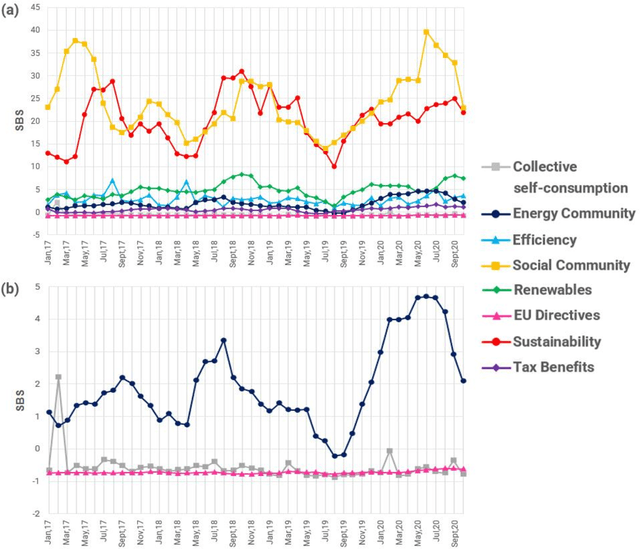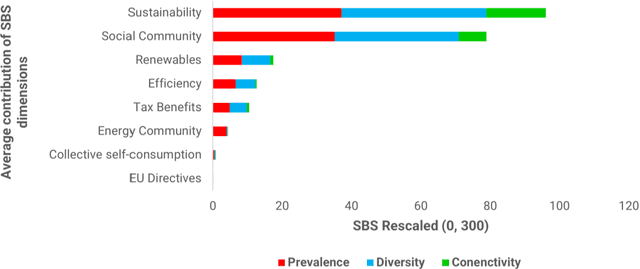A. Fronzetti Colladon
A Python Tool for Reconstructing Full News Text from GDELT
Apr 22, 2025Abstract:News data have become an essential resource across various disciplines, including economics, finance, management, social sciences, and computer science. Researchers leverage newspaper articles to study economic trends, market dynamics, corporate strategies, public perception, political discourse, and the evolution of public opinion. Additionally, news datasets have been instrumental in training large-scale language models, with applications in sentiment analysis, fake news detection, and automated news summarization. Despite their significance, access to comprehensive news corpora remains a key challenge. Many full-text news providers, such as Factiva and LexisNexis, require costly subscriptions, while free alternatives often suffer from incomplete data and transparency issues. This paper presents a novel approach to obtaining full-text newspaper articles at near-zero cost by leveraging data from the Global Database of Events, Language, and Tone (GDELT). Specifically, we focus on the GDELT Web News NGrams 3.0 dataset, which provides high-frequency updates of n-grams extracted from global online news sources. We provide Python code to reconstruct full-text articles from these n-grams by identifying overlapping textual fragments and intelligently merging them. Our method enables researchers to access structured, large-scale newspaper data for text analysis while overcoming the limitations of existing proprietary datasets. The proposed approach enhances the accessibility of news data for empirical research, facilitating applications in economic forecasting, computational social science, and natural language processing.
Societal Attitudes Toward Service Robots: Adore, Abhor, Ignore, or Unsure?
Feb 03, 2025Abstract:Societal or population-level attitudes are aggregated patterns of different individual attitudes, representing collective general predispositions. As service robots become ubiquitous, understanding attitudes towards them at the population (vs. individual) level enables firms to expand robot services to a broad (vs. niche) market. Targeting population-level attitudes would benefit service firms because: (1) they are more persistent, thus, stronger predictors of behavioral patterns and (2) this approach is less reliant on personal data, whereas individualized services are vulnerable to AI-related privacy risks. As for service theory, ignoring broad unobserved differences in attitudes produces biased conclusions, and our systematic review of previous research highlights a poor understanding of potential heterogeneity in attitudes toward service robots. We present five diverse studies (S1-S5), utilizing multinational and "real world" data (Ntotal = 89,541; years: 2012-2024). Results reveal a stable structure comprising four distinct attitude profiles (S1-S5): positive ("adore"), negative ("abhor"), indifferent ("ignore"), and ambivalent ("unsure"). The psychological need for interacting with service staff, and for autonomy and relatedness in technology use, function as attitude profile antecedents (S2). Importantly, the attitude profiles predict differences in post-interaction discomfort and anxiety (S3), satisfaction ratings and service evaluations (S4), and perceived sociability and uncanniness based on a robot's humanlikeness (S5).
* in press
Decoding excellence: Mapping the demand for psychological traits of operations and supply chain professionals through text mining
Mar 26, 2024Abstract:The current study proposes an innovative methodology for the profiling of psychological traits of Operations Management (OM) and Supply Chain Management (SCM) professionals. We use innovative methods and tools of text mining and social network analysis to map the demand for relevant skills from a set of job descriptions, with a focus on psychological characteristics. The proposed approach aims to evaluate the market demand for specific traits by combining relevant psychological constructs, text mining techniques, and an innovative measure, namely, the Semantic Brand Score. We apply the proposed methodology to a dataset of job descriptions for OM and SCM professionals, with the objective of providing a mapping of their relevant required skills, including psychological characteristics. In addition, the analysis is then detailed by considering the region of the organization that issues the job description, its organizational size, and the seniority level of the open position in order to understand their nuances. Finally, topic modeling is used to examine key components and their relative significance in job descriptions. By employing a novel methodology and considering contextual factors, we provide an innovative understanding of the attitudinal traits that differentiate professionals. This research contributes to talent management, recruitment practices, and professional development initiatives, since it provides new figures and perspectives to improve the effectiveness and success of Operations Management and Supply Chain Management professionals.
A Big Data Approach to Understand Sub-national Determinants of FDI in Africa
Mar 15, 2024Abstract:Various macroeconomic and institutional factors hinder FDI inflows, including corruption, trade openness, access to finance, and political instability. Existing research mostly focuses on country-level data, with limited exploration of firm-level data, especially in developing countries. Recognizing this gap, recent calls for research emphasize the need for qualitative data analysis to delve into FDI determinants, particularly at the regional level. This paper proposes a novel methodology, based on text mining and social network analysis, to get information from more than 167,000 online news articles to quantify regional-level (sub-national) attributes affecting FDI ownership in African companies. Our analysis extends information on obstacles to industrial development as mapped by the World Bank Enterprise Surveys. Findings suggest that regional (sub-national) structural and institutional characteristics can play an important role in determining foreign ownership.
Brand Network Booster: A New System for Improving Brand Connectivity
Sep 28, 2023Abstract:This paper presents a new decision support system offered for an in-depth analysis of semantic networks, which can provide insights for a better exploration of a brand's image and the improvement of its connectivity. In terms of network analysis, we show that this goal is achieved by solving an extended version of the Maximum Betweenness Improvement problem, which includes the possibility of considering adversarial nodes, constrained budgets, and weighted networks - where connectivity improvement can be obtained by adding links or increasing the weight of existing connections. We present this new system together with two case studies, also discussing its performance. Our tool and approach are useful both for network scholars and for supporting the strategic decision-making processes of marketing and communication managers.
A new mapping of technological interdependence
Jul 31, 2023



Abstract:Which technological linkages affect the sector's ability to innovate? How do these effects transmit through the technology space? This paper answers these two key questions using novel methods of text mining and network analysis. We examine technological interdependence across sectors over a period of half a century (from 1976 to 2021) by analyzing the text of 6.5 million patents granted by the United States Patent and Trademark Office (USPTO), and applying network analysis to uncover the full spectrum of linkages existing across technology areas. We demonstrate that patent text contains a wealth of information often not captured by traditional innovation metrics, such as patent citations. By using network analysis, we document that indirect linkages are as important as direct connections and that the former would remain mostly hidden using more traditional measures of indirect linkages, such as the Leontief inverse matrix. Finally, based on an impulse-response analysis, we illustrate how technological shocks transmit through the technology (network-based) space, affecting the innovation capacity of the sectors.
The language and social behavior of innovators
Sep 20, 2022



Abstract:Innovators are creative people who can conjure the ground-breaking ideas that represent the main engine of innovative organizations. Past research has extensively investigated who innovators are and how they behave in work-related activities. In this paper, we suggest that it is necessary to analyze how innovators behave in other contexts, such as in informal communication spaces, where knowledge is shared without formal structure, rules, and work obligations. Drawing on communication and network theory, we analyze about 38,000 posts available in the intranet forum of a large multinational company. From this, we explain how innovators differ from other employees in terms of social network behavior and language characteristics. Through text mining, we find that innovators write more, use a more complex language, introduce new concepts/ideas, and use positive but factual-based language. Understanding how innovators behave and communicate can support the decision-making processes of managers who want to foster innovation.
Evaluating and improving social awareness of energy communities through semantic network analysis of online news
Aug 03, 2022



Abstract:The implementation of energy communities represents a cross-disciplinary phenomenon that has the potential to support the energy transition while fostering citizens' participation throughout the energy system and their exploitation of renewables. An important role is played by online information sources in engaging people in this process and increasing their awareness of associated benefits. In this view, this work analyses online news data on energy communities to understand people's awareness and the media importance of this topic. We use the Semantic Brand Score (SBS) indicator as an innovative measure of semantic importance, combining social network analysis and text mining methods. Results show different importance trends for energy communities and other energy and society-related topics, also allowing the identification of their connections. Our approach gives evidence to information gaps and possible actions that could be taken to promote a low-carbon energy transition.
Your Face Mirrors Your Deepest Beliefs-Predicting Personality and Morals through Facial Emotion Recognition
Dec 23, 2021



Abstract:Can we really "read the mind in the eyes"? Moreover, can AI assist us in this task? This paper answers these two questions by introducing a machine learning system that predicts personality characteristics of individuals on the basis of their face. It does so by tracking the emotional response of the individual's face through facial emotion recognition (FER) while watching a series of 15 short videos of different genres. To calibrate the system, we invited 85 people to watch the videos, while their emotional responses were analyzed through their facial expression. At the same time, these individuals also took four well-validated surveys of personality characteristics and moral values: the revised NEO FFI personality inventory, the Haidt moral foundations test, the Schwartz personal value system, and the domain-specific risk-taking scale (DOSPERT). We found that personality characteristics and moral values of an individual can be predicted through their emotional response to the videos as shown in their face, with an accuracy of up to 86% using gradient-boosted trees. We also found that different personality characteristics are better predicted by different videos, in other words, there is no single video that will provide accurate predictions for all personality characteristics, but it is the response to the mix of different videos that allows for accurate prediction.
Enhancing operations management through smart sensors: measuring and improving well-being, interaction and performance of logistics workers
Dec 15, 2021



Abstract:Purpose The purpose of the research is to conduct an exploratory investigation of the material handling activities of an Italian logistics hub. Wearable sensors and other smart tools were used for collecting human and environmental features during working activities. These factors were correlated with workers' performance and well-being. Design/methodology/approach Human and environmental factors play an important role in operations management activities since they significantly influence employees' performance, well-being and safety. Surprisingly, empirical studies about the impact of such aspects on logistics operations are still very limited. Trying to fill this gap, the research empirically explores human and environmental factors affecting the performance of logistics workers exploiting smart tools. Findings Results suggest that human attitudes, interactions, emotions and environmental conditions remarkably influence workers' performance and well-being, however, showing different relationships depending on individual characteristics of each worker. Practical implications The authors' research opens up new avenues for profiling employees and adopting an individualized human resource management, providing managers with an operational system capable to potentially check and improve workers' well-being and performance. Originality/value The originality of the study comes from the in-depth exploration of human and environmental factors using body-worn sensors during work activities, by recording individual, collaborative and environmental data in real-time. To the best of the authors' knowledge, the current paper is the first time that such a detailed analysis has been carried out in real-world logistics operations.
* in press
 Add to Chrome
Add to Chrome Add to Firefox
Add to Firefox Add to Edge
Add to Edge